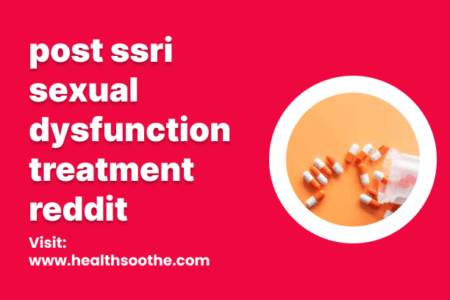Duloxetine is categorized as an antidepressant known as a selective serotonin and norepinephrine reuptake inhibitor (SSNRI). It functions by influencing the balance of certain chemicals in the brain, particularly in individuals experiencing depression.
This medication is prescribed for the treatment of major depressive disorder in adults. Additionally, it is utilized to address general anxiety disorder in both adults and children aged 7 and above.
Duloxetine is also employed in adults for alleviating nerve pain associated with diabetes (diabetic neuropathy) or persistent muscle or joint pain, such as low back pain and osteoarthritis pain.
Certain brands of duloxetine are specifically designated for managing fibromyalgia, a chronic pain disorder. Drizalma is designed for the treatment of fibromyalgia exclusively in adults, while Cymbalta may be administered for fibromyalgia in both adults and children aged 13 and older.
Warnings
Avoid taking duloxetine within 5 days before or 14 days after using an MAO inhibitor, such as isocarboxazid, linezolid, methylene blue injection, phenelzine, tranylcypromine, and others, as it may lead to a potentially dangerous drug interaction.
Individuals experiencing depression or mental illness might encounter thoughts of suicide. In some cases, young people may experience an increase in suicidal thoughts when initiating treatment with an antidepressant. It is crucial to promptly inform your doctor if you undergo any abrupt changes in mood or behavior or if you have thoughts about suicide.
It is important not to discontinue the use of duloxetine without consulting your doctor first.
How should I take duloxetine?
Adhere to your doctor’s prescription when taking duloxetine. Follow all instructions on your prescription label and carefully read all medication guides or instruction sheets provided. Your doctor may adjust your dose from time to time.
Taking duloxetine in higher doses or more frequently than prescribed will not enhance its effectiveness and may increase the likelihood of experiencing side effects.
Consume the capsule whole; do not crush, chew, break, or open it.
Duloxetine can be taken with or without food.
Regular monitoring of your blood pressure is necessary.
Inform your doctor of any changes in sexual function, such as a diminished interest in sex, difficulty achieving orgasm, or, for men, challenges with erections or ejaculation. Some sexual issues can be addressed.
It may take up to 4 weeks before you notice an improvement in your symptoms.
Do not discontinue the use of duloxetine abruptly, as doing so may result in unpleasant symptoms like agitation, confusion, or sensations of tingling or electric shocks. Always consult your doctor before discontinuing the medication.
Store the medication at room temperature, away from moisture and heat.
Read Also: Names of Manpower Drugs in Nigeria and their categories
Pros and Cons of duloxitine
Pros (Benefits)
- Antidepressant Efficacy
- Anxiolytic Effects
- Pain Management
- Convenience
Cons
- Side Effects
- Withdrawal Symptoms
- Serotonin Syndrome
- Suicidal Thoughts
Differences Between duloxitine and flomax
Duloxetine
Works by increasing the levels of serotonin and norepinephrine in the brain, which are neurotransmitters that play a role in mood and pain perception.
Flomax
Relaxes the muscles in the prostate and bladder neck, making it easier for urine to flow.
Alternative to duloxitine
For Depression and Anxiety
- Other classes of antidepressants such as selective serotonin reuptake inhibitors (SSRIs) like fluoxetine, sertraline, or escitalopram may be considered.
- Tricyclic antidepressants (TCAs) or other selective serotonin and norepinephrine reuptake inhibitors (SNRIs) like venlafaxine might be alternatives.
Dosing information
Below are the typical adult and geriatric doses for various conditions, as well as pediatric doses for specific age ranges:
Depression:
- Initial dose: 20 mg to 30 mg orally twice a day
- Maintenance dose: 60 mg per day, given either once a day or 30 mg orally twice a day
- Maximum dose: 120 mg/day
Fibromyalgia:
- Initial dose: 30 mg orally once a day for at least 1 week
- Maintenance dose: 30 to 60 mg orally once a day
Generalized Anxiety Disorder:
- Initial dose: 60 mg orally once a day
- Maintenance dose: 60 to 120 mg orally once a day
- Maximum dose: 120 mg/day
Pain (Non-specific):
- Initial dose: 30 to 60 mg orally once a day
- Maintenance dose: 60 mg orally once a day
Neuropathic Pain:
- Initial dose: 30 to 60 mg orally once a day
- Maintenance dose: 60 mg orally once a day
Chronic Pain:
- Initial dose: 30 to 60 mg orally once a day
- Maintenance dose: 60 mg orally once a day
Geriatric Dose for Generalized Anxiety Disorder:
- Initial dose: 30 mg orally once a day for at least 2 weeks
- Maintenance dose: 60 mg orally once a day
- Maximum dose: 120 mg/day
Pediatric Dose for Generalized Anxiety Disorder (7 to 17 years):
- Initial dose: 30 mg orally once a day for at least 2 weeks
- Maintenance dose: 30 to 60 mg orally once a day
- Maximum dose: 120 mg/day
Pediatric Dose for Fibromyalgia (13 years and older):
- Initial dose: 30 mg orally once a day for at least 1 week
- Maintenance dose: 30 to 60 mg orally once a day
What happens if I miss a dose?
If you miss a dose, take the medicine as soon as you remember. However, if it’s almost time for your next scheduled dose, skip the missed dose and continue with your regular dosing schedule. Avoid taking two doses at the same time to make up for the missed one.





